Nine Innings: The Cardinals' Turnaround Behind Mike Shildt, Fixing Suspensions and Sorting the NL West
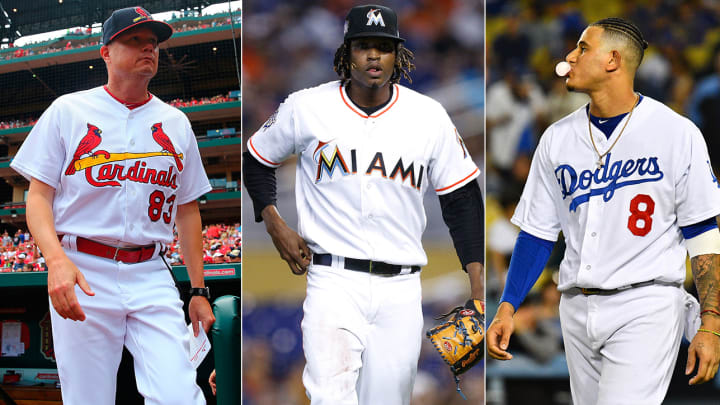
HOW NEW MANAGER MIKE SHILDT IS ENGINEERING THE CARDINALS' TURNAROUND
By Tom Verducci
Before every game—after batting practice at home, before it on the road—the St. Louis Cardinals meet to talk baseball. It is an ancient concept that in today’s game is novel. They talk about the previous night’s game, what to look for in the upcoming game … anything baseball related in the way ballplayers used to do after games in the old days before beer, the mortar of team bonding, was banned from the clubhouse, and before everyone hurried to jump in their expensive sports car and bolt out of private lots with police escorts to beat traffic. It’s been ages since the old line from Pee Wee Reese resonated: “If you’re in a hurry to get out of the clubhouse you’re in a hurry to get out of baseball.”
The Cardinals’ daily exercise is the signature work of Mike Shildt, 50, the accidental manager and baseball lifer who has helped turn St. Louis into the hottest team in baseball this side of Boston.
“It’s informal,” Shildt said of the clubhouse confab. “But everybody’s there.”
The floor is open. Players take turns generating discussions. The meetings and Shildt’s low-key, relaxed approach have established an unmistakable culture around the team: “It’s a player’s game,” Shildt said, in words that best distill his outlook. “It’s our job to steer them more in the right direction.”
The Cardinals are 21-11 under their interim manager. They are showing more energy and emotion. Their at-bats are better. The bullpen, re-made on the fly by president John Mozeliak, is better. The young starters are filling the zone with strikes. Can any of this be connected to what Shildt is building before games?
“Preparation leads to consistency, consistency leads to winning,” Shildt said. “I love it. I’m learning a lot [in the meetings]. Guys are sharing information and observation. It’s about honesty and transparency. It’s about competing as a team and as a family.”
Shildt was viewed as an anonymous placeholder when Mozeliak boldly fired Mike Matheny on July 14, the last weekend before the All-Star break. Matheny was a big league manager out of central casting. With his broad shoulders and smoldering dark intensity, the former catcher had the look of authority, like a concrete federal government building. He spent games on his feet, arms crossed or akimbo, leading with his chin.
Shildt, on the other hand, seems sent not from central casting but central accounting. Bespectacled and slight, he sits the entire game with the appearance of a juror. He is perpetually calm and observant. It’s not to say one style is better than the other but that they are different, and at a time when the Cardinals needed different.
Roundtable: Who Are the Frontrunners to Take Home the MVP, Cy Young and ROY?
Like many organizations, the Cardinals were in a rush to hire Matheny, giving him the job without experience because … well, because he played for the team, came cheaply and he was wet clay who would learn how to do the job the way the front office wanted. Matheny did have success, with winning teams every year, but staleness befell the club this year as veterans Adam Wainwright, Carlos Martinez, Marcel Ozuna and Dexter Fowler were either hurt or ineffective. Mozeliak borrowed from physics: a team at rest tends to stay at rest, and decided another voice was needed, especially to allow youth to step confidently into the veterans’ breach.
Enter Shildt, whom Mozeliak brought into the St. Louis organization many years ago as an area scout after Shildt played at UNC-Asheville and coached high school ball. From there Shildt kept rising: part time coach and scout (2004-05), minor league coach (2006-08), minor league manager (2009-16), major league quality control coach (2017), third base coach (2017) and bench coach (2018). He is familiar with the young Cardinals and they with him. He was a tried and true organizational guy in an organization that cherishes them, in the spirit of great baseball men like George Kissell, Red Schoendienst and Jose Oquendo, but the timber of major league manager? It didn’t seem likely. History is not on his side.
Shildt is one of only eight men to manage a major league team without having played a day of professional baseball, including Braves owner Ted Turner, whose self-appointment as manager in 1977 was considered such a joke that the commissioner issued a cease-and-desist edict after just one game.
None of the “Never Played” Club posted a winning record. Between Turner and Shildt were Dave Trembley of the Orioles, Carlos Tosca of the Blue Jays and John Boles of the Marlins, all of whom came and left as nothing more than solid player development guys who made no imprint as big league managers. Maybe the same fate awaits Shildt, but you can’t argue with his first 32 games, in which St. Louis rescued meaning from its season and has kept the ballpark filling with the renewed faithful. Baseball is so important to the city, especially without an NFL team, that the idea of a meaningless September is cause for deep civic melancholia.
Credit to Shildt, as he himself would acknowledge, only goes so far. He is the beneficiary of timing. Mozeliak gets as much credit for the turnaround. Mozeliak re-made the bullpen; reaped the benefits of hiring pitching coach Mike Maddux, who has the traditionally sinker-loving Cardinals throwing fewer fastballs and more cutters and breaking balls; traded Tommy Pham to open a spot for the dynamic Harrison Bader; and sent the loud message that inertia would not be tolerated in his Saturday Night Surprise firing of a successful manager.
True to his North Carolina style, like sweet tea on a porch rocker, Shildt’s touches have been more subtle than forceful, but together they have made a difference. Among them, in addition his Cardinal Klatches, are:
• Batting Yadi Molina second and never giving him a day off.
It seems counterintuitive to bat Molina second, what with his lack of speed and propensity to hit into double plays. And with Matt Carpenter in the leadoff spot, St. Louis might have the least speed in the two traditional table-setting spots ever seen in a contender’s batting order.
“I look at it simply as who do you want to hit the most?” Shildt said. “Your best hitters. And if you want to walk or pitch around Carp, why wouldn’t you want one of your best clutch hitters behind him to do damage?”
Molina, 36, has played nearly a month straight without a day off. Shildt said he trusts Molina to tell him when he needs a day off, and he has his bench coach, Oquendo, regularly check in with his catcher.
• Pulling pitchers quickly.
In his first game Shildt pulled his best pitcher, Miles Mikolas, for a pinch-hitter in the fourth inning in a run-scoring opportunity. He is more likely to pull a pitcher too early rather than too late. The emergence of rookies Dakota Hudson and Jordan Hicks as reliable high-leverage options has permitted such aggressiveness.
• Re-configuring the defense.
Jose Martinez, a disaster at first base, was told to worry only about his hitting and playing rightfield, where he can be replaced with a lead late in games. Carpenter, a liability while floating among other infield spots, was kept comfortable and anchored at first base. Kolten Wong and his slick glovework reclaimed his everyday run at second base. Bader, one of the game’s true impact defenders, was empowered to show off his skills in centerfield. The net result has been a sloppy defensive unit became a tight unit to support the young staff. St. Louis has permitted only four unearned runs this month.
Those are the nuts and bolts of what Shildt has wrought. His cultural contribution is to cast a small shadow and allow the youthfulness and energy of his players to flourish. The Cardinals and their imaginary salsa-chomping celebrations sometimes look as if they’re playing to get to Omaha, such is their collegiate enthusiasm. They are riding a wave and woe to clubs in their way.
But challenges await. Wainwright, Martinez and Michael Wacha are all making their way back from injuries, and Shildt will be challenged to weave them back into enough innings and the winning culture. There may be a wall awaiting Molina in September at his rate of play. Young pitching in September can be dicey, especially for those pitching a sixth month for the first time.
Those are welcome challenges for a team that appeared to be facing an empty September before Mozeliak changed managers on July 14 after 93 games.
There is an obvious precedent. Thirty years ago, in 1988, on nearly the same date (July 10) and after a similar number of games (85), Boston Red Sox GM Lou Gorman fired an established manager (John McNamara) to give the job on an interim basis to a 57-year-old organizational guy who had never managed in the big leagues (Joe Morgan). The Red Sox won their next 12 games on their way to a 46-31 record under Morgan that carried them into the playoffs. Morgan was retained on a full-time basis. “Morgan Magic” had a 3 ½-year run before he was fired after an 84-win season in 1991. He never managed again.
Watch: Dodgers Reliever Zac Rosscup Beats Mariners With Immaculate Ninth Inning
Similarly, whether St. Louis holds its playoff position or not, Shildt may be earning himself the full-time job. At the least of it, Mozeliak simply had the right guy on hand at the right time, and the Cardinals are riding a short-lived hot hand. At the best of it, Shildt might become only the second man to manage a postseason game without having played a day of professional baseball.
It’s been a hundred years since the one time it happened. The 1918 Red Sox won the World Series under the guidance of Ed Barrow, a man who started out as a reporter out of high school, became a soap salesman and a desk clerk, then broke into baseball in 1884 selling concessions as a partner with Harry Stevens. Barrow made enough money from the concessions business to buy a minor league team, after which he installed himself as manager. Eventually he landed a major league managing gig with the Tigers, and then with those Red Sox and their two-way star, Babe Ruth.
Barrow would go on to a Hall of Fame career as the de facto general manager of the New York Yankees, where he became a trailblazer again. He was the first executive to permanently put numbers on uniforms, the first to retire numbers, the first to allow fans to keep foul balls and the first to play The National Anthem before games.
It’s been one hundred years since anybody like Barrow, with no professional player experience, managed a postseason game in the majors. Under Shildt, the Cardinals have made it possible it could happen again.
BEST THING I SAW: A PERFECT PLAY BY THE A'S AND ASTROS
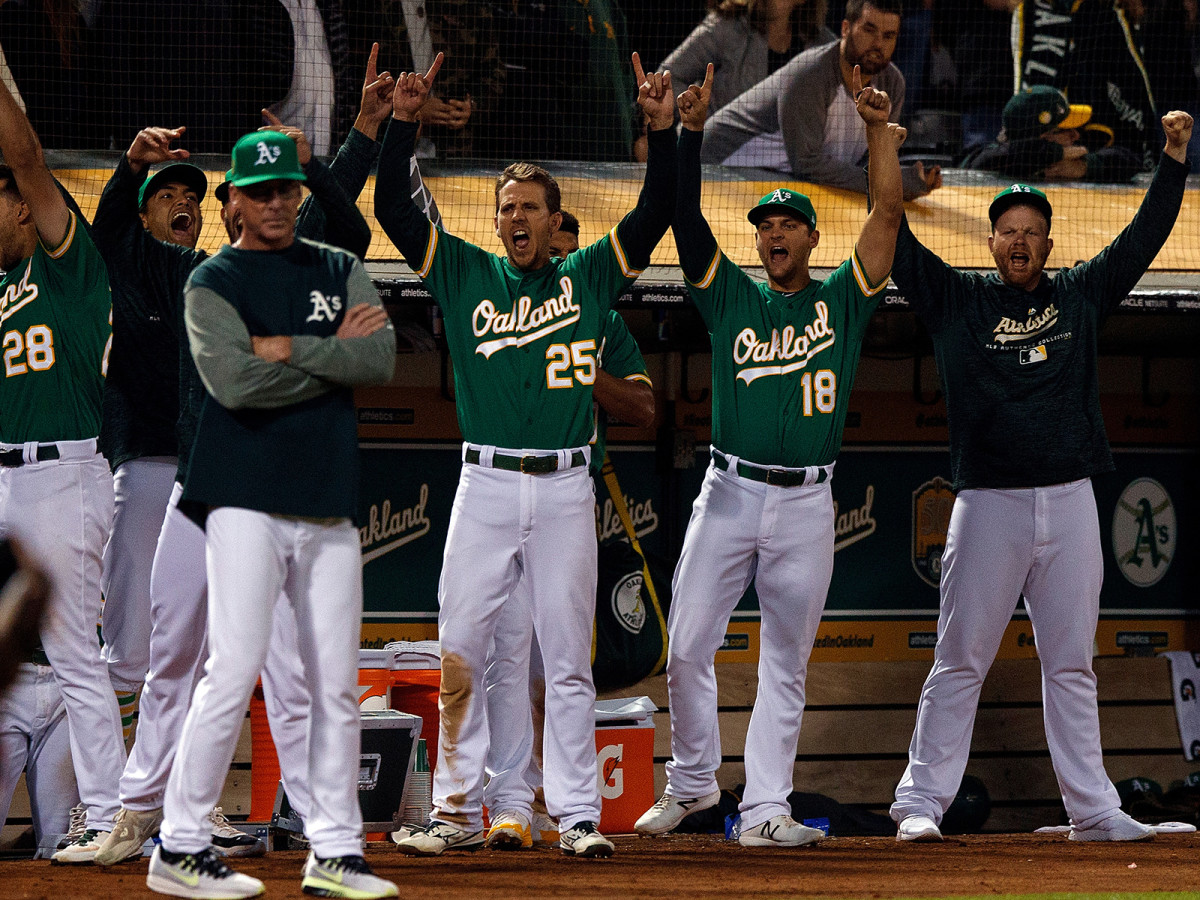
By Michael Beller
The A's inched even closer to the Astros by taking two of three from the defending champs in a riveting weekend series. Matt Olson cemented Friday’s 4-3 win for Oakland, belting a walk-off homer in the 10th inning. Before his heroics the A's tied it in the ninth, and the play that ultimately forced extras was the best thing I saw this week.
With one out and no one, Chad Pinder drew a ninth-inning walk against Hector Rondon. Ramon Laureano, who you might remember from his ridiculous throw last week, came in to pinch run. On a 2-2 pitch, Nick Martini lined a double into the right-field corner. And then this happened.
This is a perfect baseball play by everyone involved. Laureano’s baserunning is textbook, and the head-first slide got him in just ahead of the tag. Josh Reddick tracked the ball down quickly and started the relay with a throw to Carlos Correa that was right on the money. Correa delivered a strike to home that, at first, seemed to nail Laureano. Martin Maldonado blocked the plate expertly, especially considering the modern rulebook, and let the throw travel all the way to him instead of going out to meet it, which would’ve opened an easy sliding lane for Laureano. The execution on this play would make Tom Emanski proud.
Few things in baseball are more exciting than a play at the plate with a runner going first-to-home on a double, and the specific situation and the stakes of this A’s-Astros series only made it better.
A CASE FOR EACH NL WEST CONTENDER TO TAKE THE DIVISION CROWN
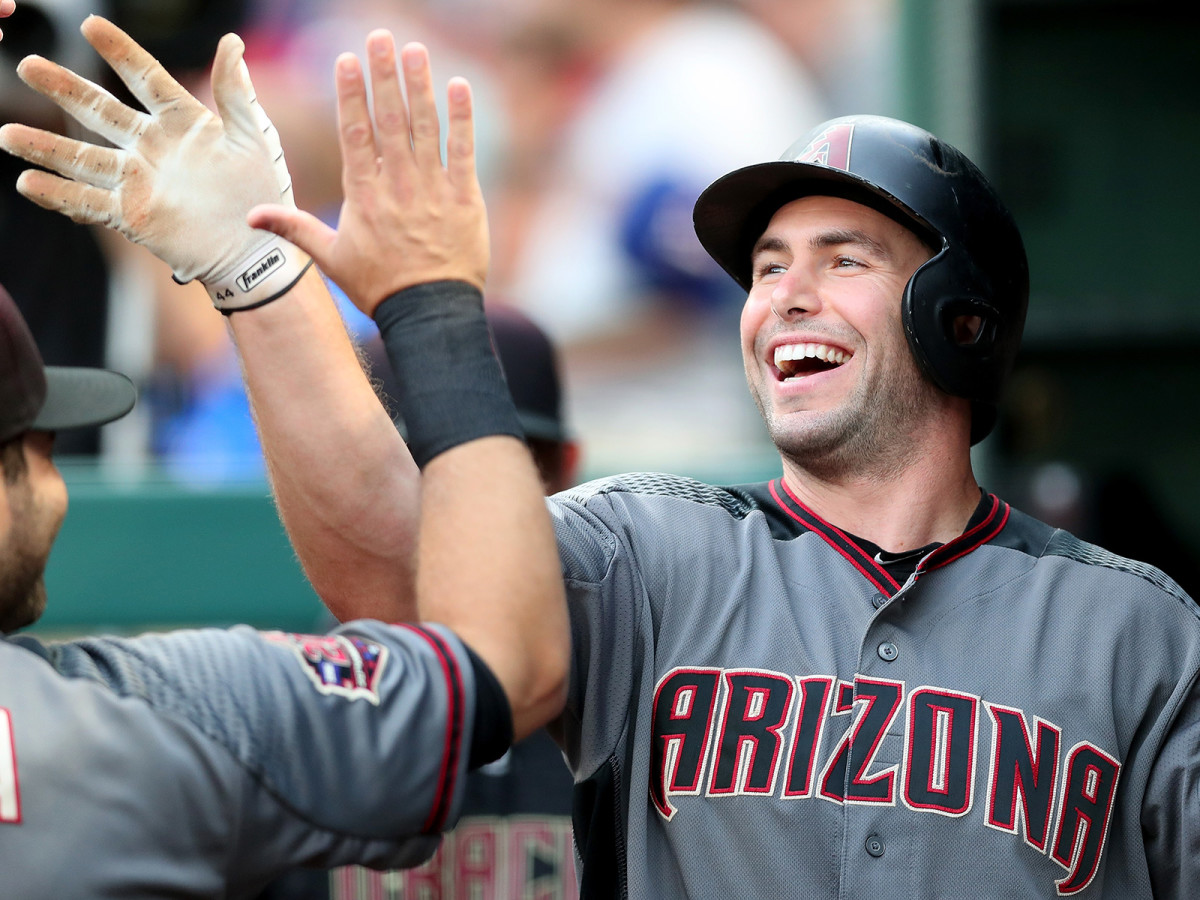
By Gabriel Baumgaertner
The NL West has turned into a six-week sprint for the Dodgers, Rockies and Dodgers, with the five-time defending division champs currently on the outside looking in. Here's a case for and against each team winning the division.
Dodgers
Case for: The Dodgers are the most balanced of any team in the NL West: they have starting pitching, power and depth. Even if Matt Kemp doesn’t produce the way he did in the beginning of the season and Max Muncy’s power declines, Los Angeles has the balance that every team in the big leagues seeks in big games. Pretty much every player in the starting lineup is capable of a big hit regardless of situation while the starting pitching will likely carry them into the sixth or seventh inning with a lead barring issues with…
Case against: The bullpen! Even if Kenley Jansen’s heart issues no longer disable him come October, the Dodgers are going to have issues bridging the gap to the ninth inning. Dylan Floro balked the winning run in against the Mariners on Saturday night. Pedro Baez is the most despised player in recent Dodger history. When Scott Alexander was given his first save opportunity as a member of the Dodgers, he surrendered the lead with one strike left to the team’s biggest rival.
There are no easy answers, and those answers won’t arrive by the August 31st trade deadline.
Diamondbacks
Case for: The fact that they’re boring? The Diamondbacks feature one of the National League’s most balanced if unimpressive offenses, a tremendous defense and a strong front end of their starting rotation. The team can feel comfortable whenever Zack Greinke, Robbie Ray or Patrick Corbin takes the hill in a serious situation because of the defense that backs them up. And when Paul Goldschmidt and the upstart David Peralta are in the lineup, there is always offense on the horizon.
Case against: Are you really going to bank on this team in a one-game playoff? Even if manager Torey Lovullo is able to bridge Zack Greinke to Archie Bradley, who are you going to trust? You can’t throw them every night. This team runs out of reinforcements even if they’re balanced. The scepter of J.D. Martinez will haunt them once they trail in the ninth inning of a crucial game.
Rockies
Case for: Coors, baby. Let’s rake. Nolan Arenado and Charlie Blackmon are arguably the most fearsome hitters in their home ballpark of any team in the big leagues. Kyle Freeland might be the most underrated starting pitcher in baseball given his home park and his ERA (2.96); he’s a viable Game 1 starter of any playoff series!
Case against: The expensive bullpen is a joke. All I need for support is the stats:
Wade Davis: 5.08 ERA/1.23 WHIP in 55 games
Bryan Shaw: 6.42 ERA/1.825 WHIP in 53 games
Jake McGee: 6.21 ERA/1.452 WHIP in 49 games
You’re crazy if you think this team survives anything beyond the Wild Card Game.
ROUNDTABLE: IS THERE A VIABLE WAY FOR MLB TO SUSPEND PITCHERS LONGER THAN HITTERS OR IS THE LEAGUE GLUED TO THE PRECEDENT IT'S SET?
Editor's note: This question comes in the wake of Marlins pitcher Jose Ureña's suspension for hitting Braves rookie Ronald Acuña Jr., which will likely cost Ureña only one start.
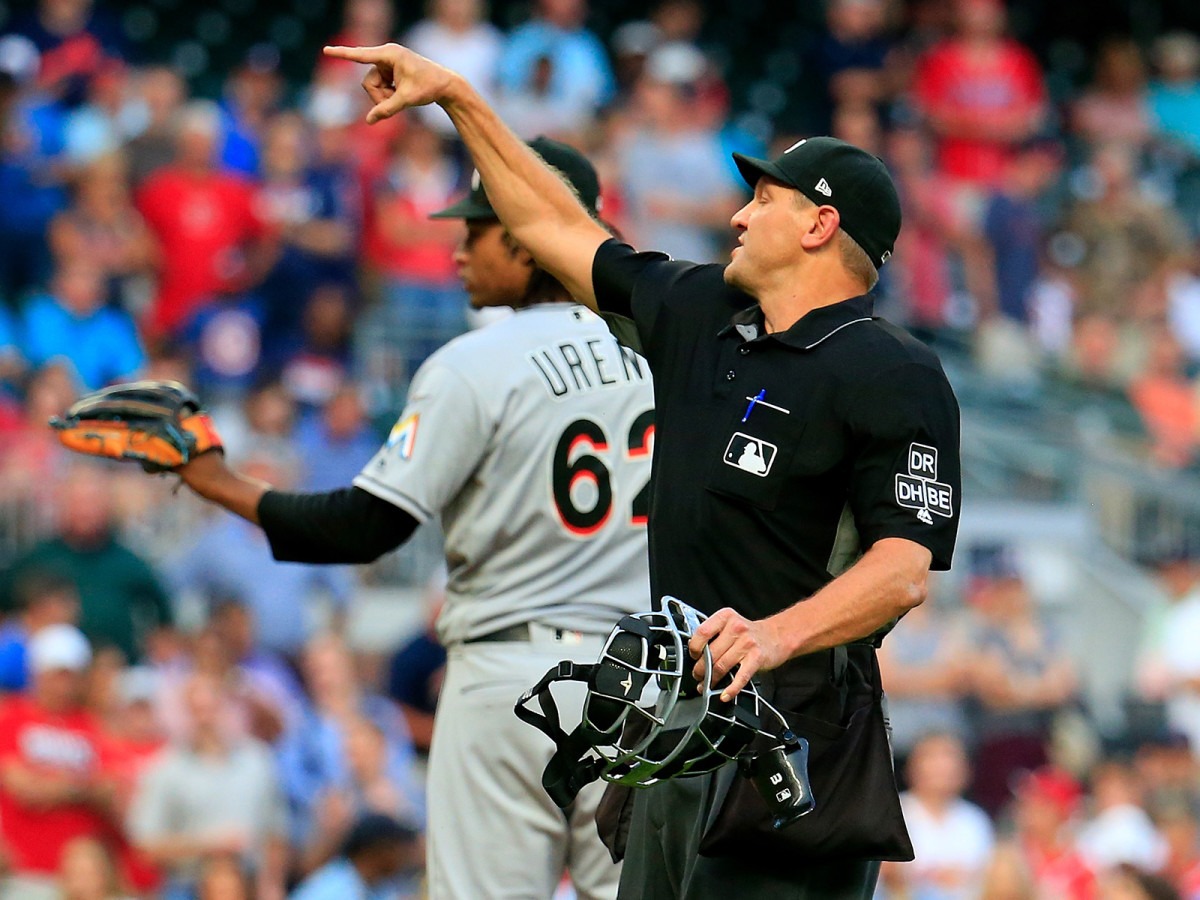
Emma Baccellieri: The precedent that the league has set here is flawed, and it certainly shouldn’t go unchallenged just because it’s an established precedent. That being said—I struggle to think of a better alternative here. It seems perfectly reasonable that Ureña, or any pitcher implicated in anything similar, should have to miss more than a single start. And yet how would you begin to legislate that? A five-start suspension wouldn’t be directly comparable to a five-game suspension for a position player; such a layoff would wreak havoc on a starter’s throwing routine far beyond the consequences that a non-pitcher would suffer while serving a “similar” suspension. That doesn’t even address the problem with how the league would define a “start” that has not and will not happen. (I’ve got a feeling that no matter how it’s done, teams would find a way to game the system and argue that actually Starter X had been slated to pitch on four days’ rest this month or move to long relief or whatnot.)
I suspect that any change that singles out the length of pitcher suspensions would have to be collectively bargained, and that could be a tricky process. What do you do with, say, a swingman? How would you ever get pitchers to agree to such a change? And so on. It’s unfortunate, but MLB’s flawed precedent might be simply the least objectionable option here for now.
Gabriel Baumgaertner: I thought MLB would suspend Ureña for 20-30 games because he pitches for the Marlins. Unfortunately the commissioner’s office considers one start from an average pitcher more impactful than two games from a significant everyday player (Yasiel Puig). It’ll take one starting pitcher to be suspended for 4-5 starts before retaliatory actions are erased. If players like Jose Ureña are suspended one start until then, it isn’t going to happen.
Michael Beller: The simple fix for MLB is embracing common sense. Forget about any specific example, even one as egregious as Ureña hitting Ronald Acuña Jr. Why do hitters get suspended for multiple games, but pitchers only get suspended for what’s effectively one outing? I suppose it seems punitive for a pitcher to lose two starts, which represents about 7% of his season, while a hitter suspended for two games loses just 1.2% of his season, but that’s not a good enough reason to limit punishments for pitchers to what amounts to one turn through the rotation. The league should want to cut down on bean balls no matter who’s in the batter’s box. False bravado doesn’t do anyone any good, especially if it can result in someone else getting injured. The only way the fake tough guys on the mound are going to learn is if they face circumstances that actually matter. MLB has total power to do that the next time this situation arises.
Leonys Martin Leaving Hospital After Battling Life-Threatening Bacterial Infection
Connor Grossman: As Emma alluded to, MLB finds itself in a predicament that likely can't be solved without collective bargaining. But from the perspective of the Players' Association, can they indirectly endorse members hurting other members and possibly altering careers? It seems to be in MLBPA's best interest to allow Major League Baseball to break from precedent and deal 10- to 20-game suspensions for starting pitchers. Further disincentivizing pitchers to throw at hitters is unquestionably good for baseball. We shouldn't have to wait for the next CBA negotiations for it to happen.
Jon Tayler: MLB needs to find a way to get comfortable with suspending pitchers longer than the traditional five- or six-game ban. The league has been afforded that opportunity time and again, and in each instance, it sticks to precedent. I don’t know if that’s because the league is afraid of the union fighting a harsher ruling, or if there’s a belief that brawls, headhunting and revenge make for compelling viewing. Neither is a good reason to keep things the way they are. The safety of players is at risk, and that’s far more important than allowing them to have their pointless squabbles.
Tom Verducci: As much as people got worked up over Jose Ureña hitting Ronald Acuña Jr., MLB had little choice but to follow precedent and suspend him for six games—essentially one start. If MLB wants to start running far away from precedent and willy-nilly sitting players much longer based on public opinion it would rightly run into resistance from the Players Association.
However, in the next round of CBA talks, maybe—for the sake of player safety—the two sides should talk about adopting what the NHL calls “Supplemental Discipline,” in which the injury of a player is taken into account. What if Acuna suffered a more severe injury and had to miss a month with an injury caused by a deliberate act of Ureña? Would it be fair that Acuna was out a month and Ureña was out one start? No. The NHL, in looking at whether conduct is “intentional or reckless” and handing out discipline, does consider “injury to the opposing Player(s) involved in the incident.” Sounds worthy of consideration by MLB.
FREDDY GALVIS, OZZIE SMITH AND THE NEVER-ENDING RUN OF MEDIOCRITY FOR PADRES SHORTSTOPS
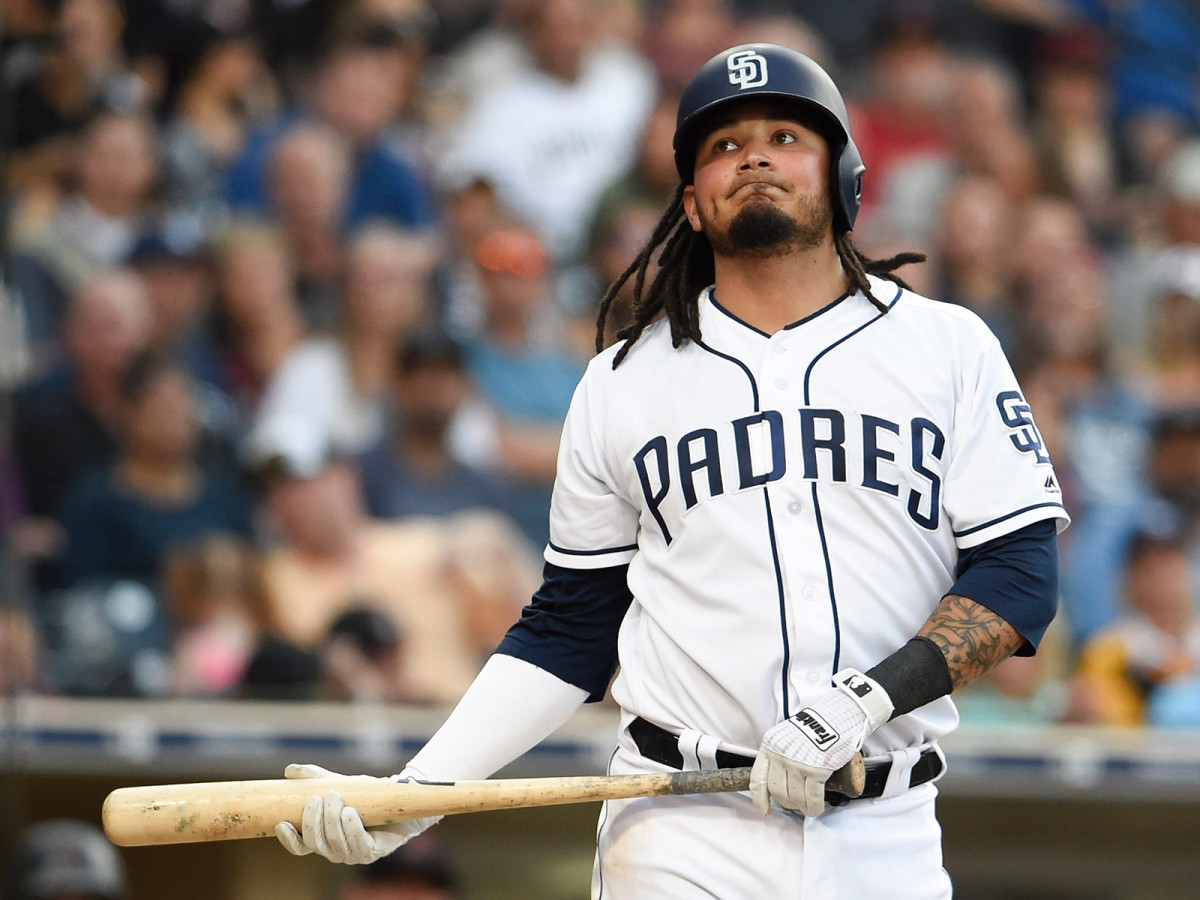
By Jon Tayler
You likely haven’t noticed the unremarkable season of Padres shortstop Freddy Galvis. Tucked in the bottom tier of Fangraphs’ Wins Above Replacement leaderboard, Galvis isn’t terrible but has been far from good. Among all qualified shortstops, his 0.7 fWAR is fourth lowest, and his 81 wRC+ ranks fifth from the bottom. (Baseball-Reference’s WAR is a little more favorable to him, at 1.3 on the year, but that’s still the fifth-worst mark at his position.) Hitting .237/.297/.363 for a last-place team, Galvis is easy to overlook.
That’s by design. Galvis, 28, was picked up in the offseason from Philadelphia not as a long-term solution, but to hold down the fort while the Padres wait for better days to arrive. Like a Netflix original movie or a cheap light beer, he’s come and gone without much notice. But even if his 2018 would be a footprint in the sand for most other teams, for San Diego, it’s enough to make a mark amid the franchise’s woeful collection of shortstops past.
As it stands, Galvis’ 1.3 bWAR is the 19th-highest–single-season mark among all Padres shortstops ever. Over 49 years and nearly twice as many players, only 18 individual seasons in San Diego have been better than Galvis’ barely-above-average results. Derek Jeter alone had 17 different seasons of 1.3 bWAR or more. The Tampa Bay Rays have had 14 such seasons despite nearly 30 fewer years of existence.
Few positions around the league are as unproductive and unmemorable as shortstop in San Diego. Since the team’s inaugural 1969 season, the Padres are dead last among major league teams in OPS at the position (.632). Only once has a Padres shortstop posted a season of 5.0 bWAR or better, and that came 38 years ago, when 25-year-old Ozzie Smith did so thanks to his otherworldly glove (and despite hitting .230/.313/.276). One year later, Smith was traded to St. Louis in a six-player deal. In Cardinals red, he’d win a World Series and 11 Gold Gloves, earn All-Star honors 14 times, and get elected to the Hall of Fame. His replacement in San Diego, Garry Templeton, posted a grand total of 10.1 bWAR over 10 seasons in Padres brown and yellow.
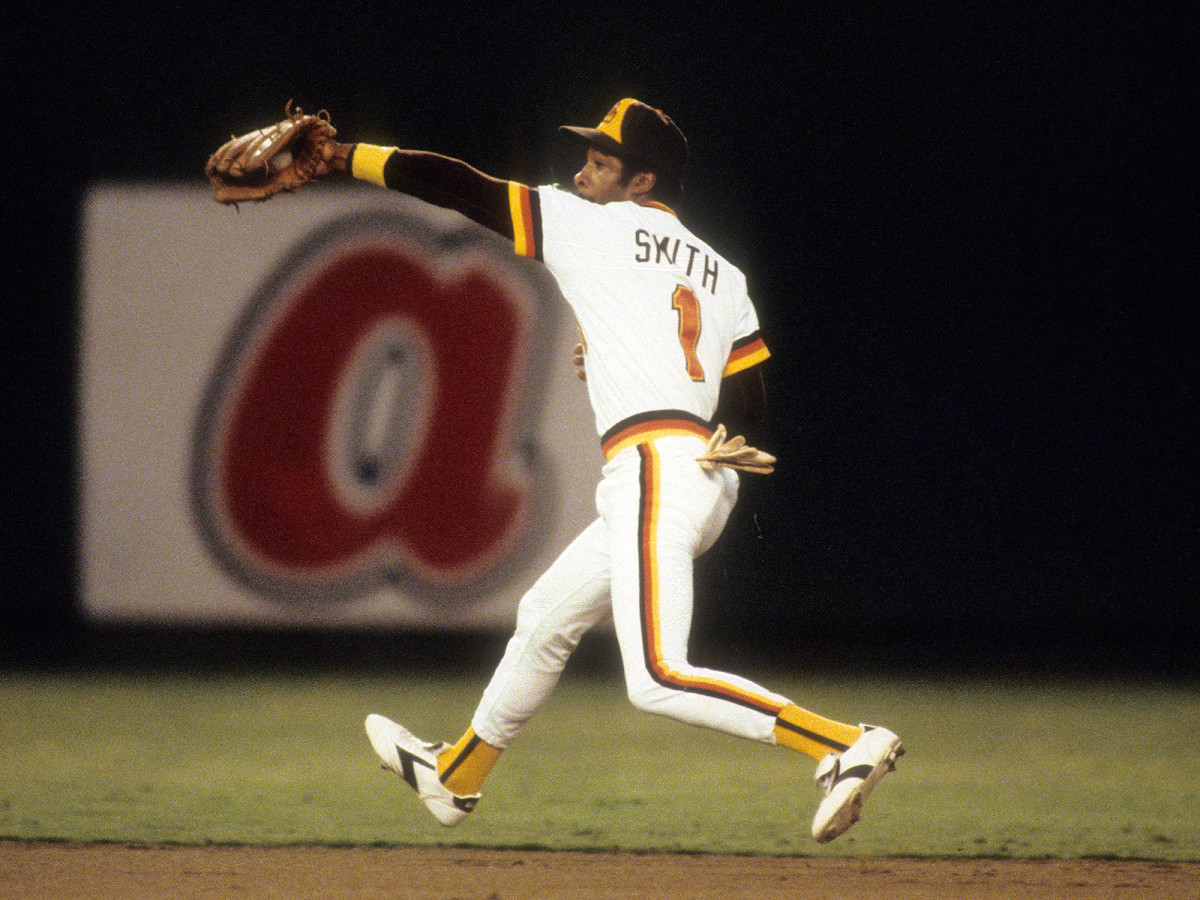
Templeton was followed by two decades of warm bodies, as San Diego cycled through veteran free agents and no-name rookies, busted top prospects and career minor leaguers. From Tony Fernandez to Chris Gomez to D’Angelo Jimenez, Padres shortstops could be counted on to be the worst the league had to offer at the position. The arrival of first-round draft pick and former collegiate superstar Khalil Greene in 2004 seemed set to end the horror, but his strong rookie season gave way to quiet mediocrity before he slipped out of the game.
Countless draft picks at the position failed, too. Matt Bush was taken No. 1 overall in 2004, then saw his career derailed by alcohol abuse. He spent more time in jail than in the Padres’ system before returning to baseball as a pitcher. Trea Turner, San Diego’s first-round selection in 2014, was set to be the team’s shortstop of the future. Instead, he was shipped to Washington six months later, where he’s become a key part of that team’s core. Virtually every other team in baseball over the last half-century has seen at least one star blossom at short; the Padres are still waiting for their first since Smith was dealt.
It won’t be Galvis, who’s a free agent after the season. But as the Padres churn toward 100 losses, they do so knowing that next year may finally be the year. Barring a massive change of plans, they’ll head into 2019 with top-10 prospect Fernando Tatis Jr.—the son of Fernando Tatis—set to take over at shortstop at some point during the season. The younger Tatis is only 19, but he lit up Double A this year, hitting .286/.355/.507 with 16 homers in 88 games. He is the brilliant future that will hopefully eclipse the likes of Galvis and Templeton and Greene. Then again, maybe the Padres’ shortstop curse isn’t that easy to duck: Tatis’ season, after all, was cut short in late July by a broken thumb.
EXPLAINING THE WORST PART ABOUT THE ORIOLES' HORRID SEASON
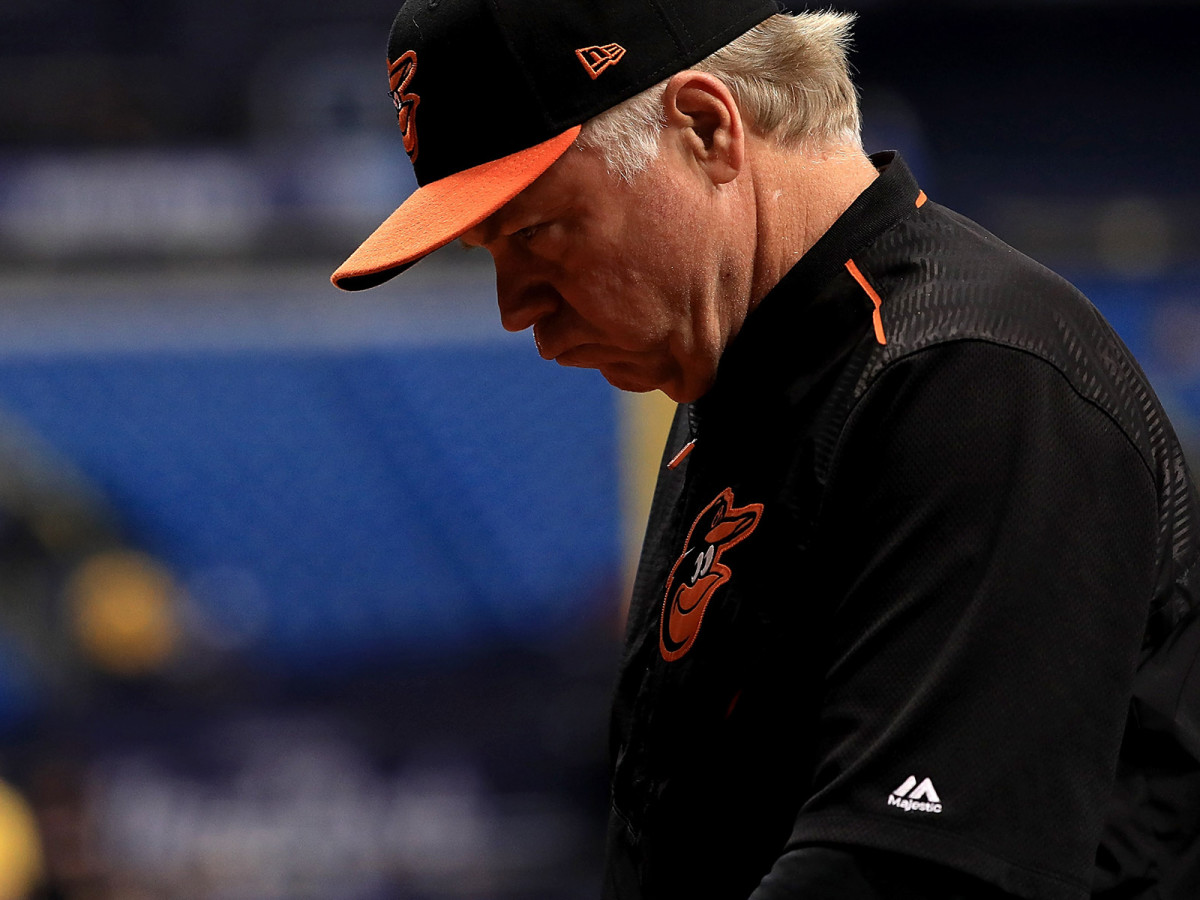
By Emma Baccellieri
Sunday’s loss to Cleveland dropped Baltimore’s winning percentage to .298, bringing a bad team closer to the historically bad territory they’ve been brushing up against all year. The Orioles were eliminated from division contention a week and a half ago, and they should be eliminated from all postseason contention this week—potentially, as soon as Monday. Being baseball’s worst team of the modern era has been out of reach for them for quite a while; the 1916 Philadelphia A’s were so bad (36-117) that no one’s really ever been able to seriously threaten them in quite some time. But for the 2018 Orioles to finish among the worst fifteen teams? The worst ten? It’s possible!
At a "winning" clip of .298, they’re currently tied for 18th. They have 23 of their 37 remaining games against teams with winning records. (Ten of those are against division heavyweights Boston and New York.) It’s not crazy to think that their record might slip a little more, given that schedule—say, that they win five of their remaining games against losing opponents, and five of their remaining games against winning opponents. That would put them at .290, which would make them the 15th worst team since 1901 and only the third team to do so poorly since 1950.
As has been the case all season, the most interesting feature of this situation is not that the team is so dreadfully bad. It’s that the team has been so dreadfully bad without trying to be this bad. Remember eight months ago? The Orioles used the offseason to attempt to fix their problem area, starting pitching, by picking up two key free agents in Alex Cobb and Andrew Cashner. Of course, both of those signings backfired—Cashner and his 4.71 ERA are the “success story” here—but it was a bona fide effort in a winter market that didn’t have too much to offer. They didn’t sell off any of their free-agents-to-be. Instead, they tried to build.
Watch: Nun Shows Off Cool Ball Trick Before Throwing Impressive First Pitch
The Orioles weren’t poised to be serious contenders, but they certainly weren’t set up to be the opposite. They’re here, in the bottom of this remarkably deep basement, from a sad combination of extreme underperformance, mind-bogglingly bad defense and simple bad luck. By contrast, look at the teams above the 2018 Orioles on the list of baseball history’s worst teams. The 1916 A’s (.235) were the product of a carefully designed fire sale, two years after a trip to the World Series, to save cash. (Read SI’s Jon Wertheim on the 100th anniversary of the team here.) The 1935 Boston Braves (.248) featured 40-year-old Babe Ruth, who was far more “40-year-old” than “Babe Ruth.” The 1962 Mets were an expansion team. The 1942 Phillies were in such a bad financial state that they needed an advance from the league to fund the basics of next year’s spring training, and they were sold shortly thereafter. The 2003 Tigers, the only team to earn a spot on this list from the last half-century, were in the process of the teardown that gave them Justin Verlander’s draft pick. And so on.
In other words, the history of baseball’s worst teams does not have many accidents. It’s a history of failure, sure, but most of that failure has been either deliberate or unavoidable. The 2018 Orioles’ failure? As they stand to be eliminated from postseason contention this week—with more than a month left to play—what stands out the most isn’t that they were this bad, but that they did it without trying.
WHAT'S ON TAP: A POTENTIAL ALCS PREVIEW HEADLINES THIS WEEK'S SLATE
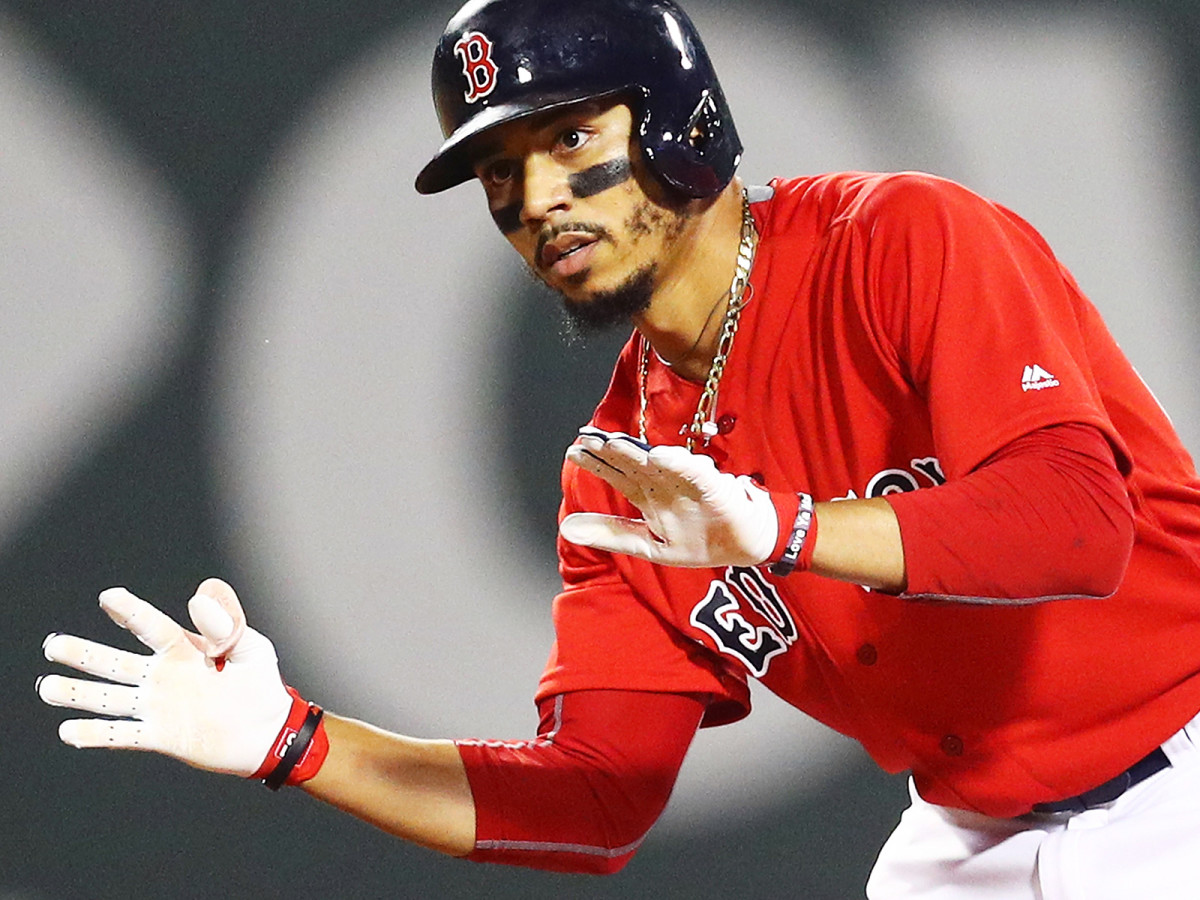
By Michael Beller
Hitter to Watch: Giancarlo Stanton, Yankees
Since Aaron Judge went on the DL, Stanton is hitting .300/.375/.678 with nine homers and 18 RBI in 104 plate appearances. The AL East belongs to the Red Sox, which is remarkable since the Yankees have the second-best record in baseball. They’re four games clear of the A’s, who hold the second wild card spot, and 7 1/2 games ahead of the Mariners, who sit in third in the wild card standings. Stanton is now hitting ..285/.353/.543 with 32 homers and 80 RBI in his first season in the Bronx.
Pitcher to Watch: Jacob deGrom, Mets
In what has been a career season during a terrible year for his team, deGrom just had arguably his best start of the year. He threw his first complete game of the season his last time out, holding the Phillies to one unearned run on seven hits, striking out nine and walking none. He has picked up wins in three straight starts to get him to 8-7, which is actually a bit unfortunate. After all, how much fun would it be to see a pitcher win the Cy Young with more losses than wins? As great as Max Scherzer and Aaron Nola have been this year, deGrom has to be considered the favorite for the NL Cy Young. He has a 1.71 ERA, 0.96 WHIP and 204 strikeouts in 168 innings this season.
Series to Watch: Indians at Red Sox, Monday through Thursday
In what could be an ALCS preview, the Indians spend the beginning of this week in Boston for a four-game series with the Red Sox. This series lost a bit of its bite with Chris Sale and Trevor Bauer going to the DL, but it should still give us some of the best baseball of the week. It isn’t often that you get four legitimate MVP candidates in one series, but that’s exactly what we’ll have with Jose Ramirez and Francisco Lindor on one side, and Mookie Betts and J.D. Martinez on the other. The Indians will send to the mound, in order, Corey Kluber, Shane Bieber, Carlos Carrasco and Adam Plutko. The Red Sox counter with Rick Porcello, Nathan Eovaldi, Brian Johnson and David Price.
TWEETS OF THE WEEK
One day after Brian Dozier said Zyrtec triggered his dizziness, Ross Stripling said soft beds at the Ritz-Carlton hampered his back. This team is like Consumer Reports.
— Bill Shaikin (@BillShaikin) August 15, 2018
.@Braves Ronald Acuña Jr now has 19 home runs on the season... It doesn't get much prettier than this 😍😍😍 pic.twitter.com/enZ4Gl6Ash
— Daren Willman (@darenw) August 15, 2018
In 2015, the year the Royals won the World Series, Salvador Perez walked 13 times all year.
— Céspedes Family BBQ (@CespedesBBQ) August 13, 2018
Barry Bonds walked 13 times in the 2002 World Series alone.
Most pitches thrown 102 MPH+ since 2008. pic.twitter.com/XxiAEDEFm7
— Daren Willman (@darenw) August 16, 2018
Aaron Nola has allowed 4 or fewer hits in 15 starts.
— Reuben Frank (@RoobNBCS) August 18, 2018
According to @BaseballRef, only 5 MLB pitchers since 1908 have had more starts allowing 4 or fewer hits at this point in a season [through team’s first 122 games]:
Kershaw, Scherzer, Nolan Ryan, Babe Ruth, Christy Mathewson
It’s here. pic.twitter.com/ulmQouyflY
— Jorge Castillo (@jorgecastillo) August 17, 2018
FROM THE VAULT: INSIDE THE LIFE OF CAL RIPKEN JR.
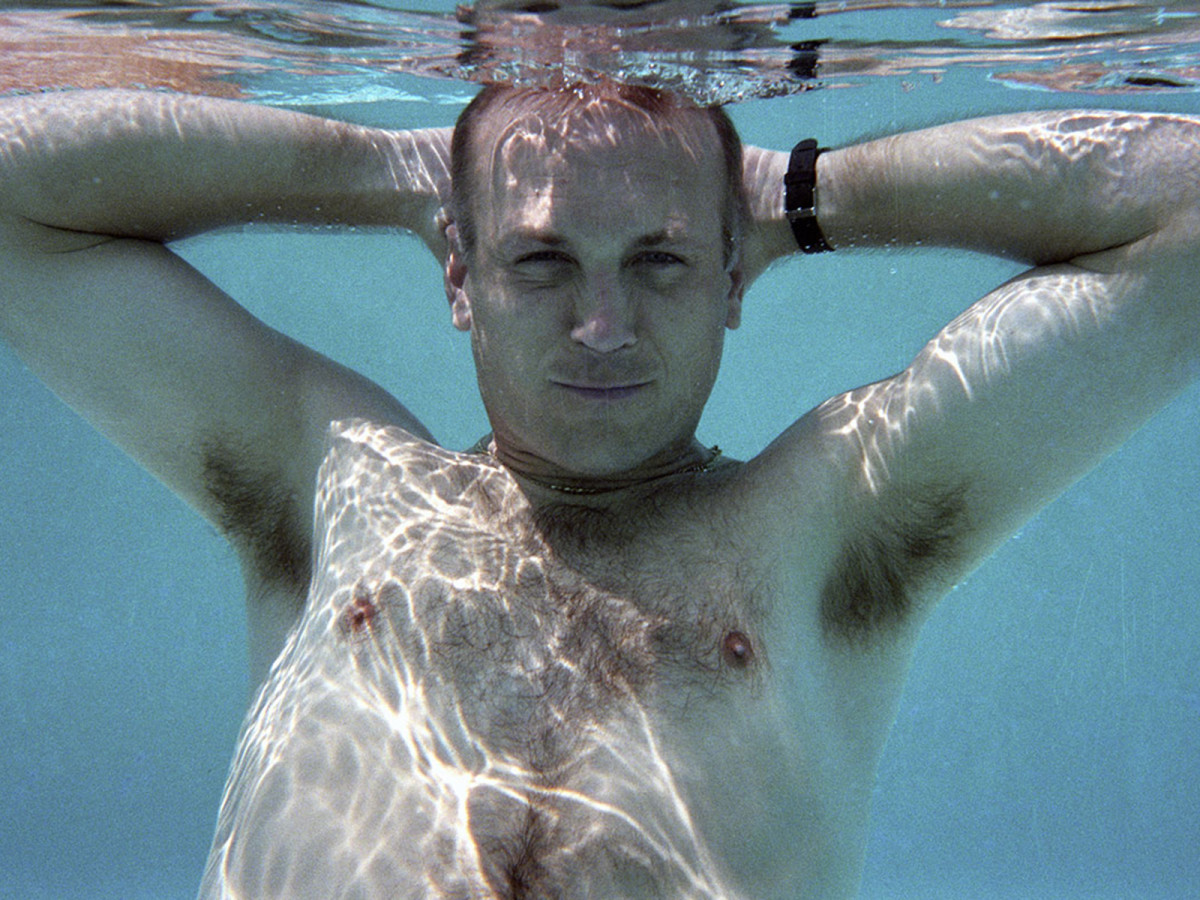
By Connor Grossman
In one of the more memorable and bizarre SI covers, a shirtless, underwater Cal Ripken Jr. graced the front of Sports Illustrated in August 1995. The issue ran about a month before Ripken became baseball's new Iron Man, surpassing Lou Gehrig's record of 2,130 consecutive games played. Ripken turns 58 on Thursday, so let's turn back the clock to his most memorable days as a ballplayer.
Tim Kurkjian invites readers into Ripken's private life, from his love of fatherhood and signing autographs to ... building a basketball scouting report on his wife?
Enjoy the excerpt below and find the entire piece here.
Lots of people, especially professional athletes, take a room in their house and convert it into a home gymnasium. Ripken has a gym that is big enough to convert into a home. He calls it "the family playhouse" because the kids' toys are in there but, truth be told, many of the toys belong to him. It is where he plays basketball in the off-season, where his batting cage is located, where he lifts weights, where his oscillating tennis-ball machine shoots him grounders, where he plays floor hockey.
Kelly, who was a pretty fair basketball player in her day, will go one-on-one with Cal from time to time. In 1973, as a 14-year-old, she finished second in the state of Maryland in a basketball skills contest. (The finals were held during halftime of a Baltimore Bullets game.) Kelly smiles and says, "That was a big thing to him because he tried to win that competition and didn't make it to the finals." She picks up a ball and playfully starts dribbling, backing him in toward the basket.
"She fakes the same way every time—watch, there it is," says Cal. Typical Rip. He even has a scouting report on his wife.
